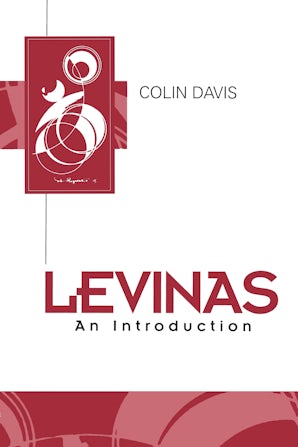Gary
Forum Replies Created
-
Gary
MemberMay 10, 2024 at 10:58 pm in reply to: Metaphysics and the Matter With Things: Thinking With Iain McGilchristThe presentation by Canadian cognitive psychologist, John Vervaeke, was really extraordinary, I thought. He went through a great of material in a short period of time, but it eventually came down to the idea that ‘relationality is the ground of ontology’ which is an idea that is being explored by philosopher, James Filler, who traces this idea back to Anaximander and Heraclitus. And, in terms of phenomenology, to Martin Heidegger. For me, personally, this is a question about the reality of time and the distinction between relational time as a continuous flowing movement that mediates action, and physical time which is a discontinuous counting of the oscillations of a physically defined oscillator. I associate the former with ‘Kairos’ and the latter with ‘Chronos’, using the ancient Greek distinction between fundamentally different forms of time. The importance of relational time is that it is fundamentally intersubjective and mediates trans-action or informational exchange, which we call communication. This relates to the ‘Transactional Interpretation of Quantum Physics’ whose relativistic version has been brought forward by Ruth Kastner who was one of the discussants on Saturday morning of the conference. Her talk was followed by the talk given by Timothy Eastman, author of the book described at this webpage of the publisher: https://rowman.com/ISBN/9781793639189/Untying-the-Gordian-Knot-Process-Reality-and-Context which is a deeply fascinating and important book, in my opinion. The emphasis on process as the unfolding of a relational reality connects directly to the idea that relationality is the ‘leading edge’ of our shared reality, as distinct from our physical ‘actuality’ which modernity mistakenly tells us is our ‘reality’ and that there is nothing more which goes along with the idea that organisms are nothing more than elaborate material mechanisms, and that a living organism can be properly viewed and understood as a complex machine–an advanced computer. Which is what nominalistic materialism maintains–there is stuff and nothing more. And that relations are ‘fluff’ and pure fiction–because relations are not detectable through the physical senses. So, if we cannot ‘see’ it on our ‘radar’ or our sensorium-based ‘instrument panel’ of the human specific ‘interface’, then it ‘does not exist’. If we restrict the term ‘existence’ to physical actuality, then, yes, then relations do not ‘exist’–but the real question, and the most important question is: Are relations REAL? Are relations part of a hidden reality that is not available to us through our evolved ‘interface’ but which can be ‘felt’ and ‘inferred’ based on what we ‘see on our radar screen’, that is what we can register on our human-specific ‘interface’ with reality? And this ‘interface’ effectively ‘hides’ the underlying relational reality from us. This is all derived from the work of Donald Hoffman, who is also a contributing author at the Essentia Foundation which you can explore at:
http://www.essentiafoundation.org/
-
Gary
MemberMay 10, 2024 at 10:31 pm in reply to: Metaphysics and the Matter With Things: Thinking With Iain McGilchristI participated remotely and was tremendously impressed with several of the presentations, and, of course, with Iain’s initial address and his responses. I thought the presentations by Ruth Kastner and Tim Eastman which connected to quantum physics were really excellent, the presentation by Zak Stein regarding our current situation was deeply disturbing but accurate, and the presentation by John Vervaeke was fantastic. There are audio recordings and transcripts now available for all of the sessions and I have had a chance to review them in some detail. The videos are not available as yet, as far as I am aware. The plan is to make the recordings and transcripts available for a nominal cost, but I do not know what the timeframe is for that.
What came across very clearly to me is that there is something deeply wrong in the general context of modernity and what Jean Gebser called the ‘perspectival Mental/Rational structure of consciousness’ which dominates modernity and is now well into a degenerate phase. What modernity assumes is that matter is prior to relation, that relation is a mind-dependent imposition on a world composed of material ‘things’ distributed in ‘space’ and ‘time’. This is nominalistic materialism–that material is prior to mind and that mind is derivative from a material nervous system. That the physical body and its structure is prior to its relational functionality. And that physicality forms the foundation, the ground of ontology, the ground of being. In order words, the relata come first and the relations that convey organization through their provenation and termination on particular relata are ‘secondary’. But there is a major problem with this, which is the ‘hard problem’ of consciousness–which the challenge of figuring out how a material brain generates qualia–elements of experience like the smell of chocolate or the taste of salt. That problem remains unsolved and likely will never be solved because it is addressing things the wrong way around. It is ‘backward’ or ‘upside-down’ thinking, as author Mark Gober calls it. One of the persons leading the charge on this is Federico Faggin, the person who first demonstrated how a microprocessor could be built on a chip of silicon. His story is very convincing, IMHO. You can check it out here in one of many videos in which he has talked about his ideas regarding ‘quantum information’ exchange as a fundamental relational basis for life and the universe. He discusses these ideas as a guest on the ‘Beyond Belief’ podcast at this link…
https://www.youtube.com/watch?v=Dvjh5bydGfw
…and a nice article about him and his ideas in Beshara Magazine here…
https://besharamagazine.org/science-technology/consciousness-as-the-ground-of-being/
-
There is a new emerging perspective, I think, and it is being worked through by people like Dr. Federico Faggin, the first person to build a microprocessor chip, and other authors and contributors to the Essentia Foundation whose goal is to demonstrate that there is a serious problem with modernity in its privileging of materialism (the ‘Things’) over relationality (the ‘Connections’), when, in fact, it is relationality that is the ground of being, the ontological ground–as is being argued in his work by Dr. James Filler. And it came up in full force, I think, in the ‘Thinking with Iain McGilchrist’ conference that occurred at the end of March in San Francisco sponsored by the Center for Process Studies and the California Institute for Integral Studies during which several people delivered their responses to the McGilchrist Divided Brain Hypothesis.
And the whole idea that fabricated machines and living organisms are somehow ‘equivalent’ has been shown to be absolutely false by theoretical biologist, the late Robert Rosen, whose papers and books, especially the last two of his life, ‘Life Itself’ and ‘Essays on Life Itself’, both published by Columbia University Press (this is not the first time I have mentioned them on this website!), make a convincing argument, using the mathematical theory of categories, that living organisms far exceed fabricated mechanisms in their entailment capacity and are fundamentally, categorically distinct from mechanisms which are limited to conforming to the mechanistic formalism that was Newton’s favorite alchemical construct. So mechanisms are constrained to a basic formalism, which means they operate in the context of an ‘ontology of states’. Not so for living organisms. What is the difference? Living organisms as relational systems contain ‘closed causal loops’ operating on a temporal continuum. Fabricated mechanisms do not. Living organisms are not strictly deterministic. Fabricated mechanisms are, by definition Living organisms require impredicative mathematics. Fabricated mechanisms can be readily understood with predicative mathematics. Living organisms are NOT computable nor do they function algorithmically. Fabricated mechanisms are both. Living organisms are open to efficient causation. Fabricated mechanisms are closed to efficient causation. Living organisms have ‘complex’ dynamics. Fabricated mechanisms have ‘simple’ dynamics. For living organisms, the semantic description EXCEEDS the syntactic description because their behavior is context-dependent (see Timothy Eastman’s book, ‘Untying the Gordian Knot‘), as is the case for a natural language. For fabricated mechanisms, the semantic description and the syntactic description are EQUIVALENT. If you know the structure, you can predict the function for a fabricated mechanism–not so for an organism, as is the case for a computer language. This is all to support the fundamentally important argument that Iain makes that there is no such thing as ‘Artificial Intelligence’–it is an oxymoron. Nothing fabricated and artificial can manifest the adaptive intelligence across varying contexts of a living organism. It might approximate it in some limited context, but that is about it. Living organisms have significantly elevated entailment power as compared to fabricated mechanisms.
rowman.com
Untying the Gordian Knot: Process, Reality, and Context
Untying the Gordian Knot shows how the fundamental notions of process, logic and relations, woven with triads of input-output-context, can be combined with quantum distinctions associated with act...
-
This is a great question. I approach this from the Jungian perspective of differentiating the egoic ‘self’–with a little ‘s’–from the holistic ‘Self’ which I view from the semiotic perspective as the person as a ‘sign’–in its broadest sense–as used in the triadic semiotics of Charles Sanders Peirce, which can be traced back, as a concept, to the Greeks–for example, its use in the ‘medical semiotics’ of Hippocrates. The egoic ‘self’ is language-dependent and, as such, is a left-hemispheric phenomenon. It is the ‘I’ in the famous Cartesian quotation, ‘I think, therefore I am.’ It is the ‘I’ that sees itself as a thinking being exclusively. Of course, it is pretty clear that a person is far more than an ‘ego’, so defined. And this is the argument that the late John Deely makes when arguing for the ‘recovery of person’ through understanding a person as the totality of a sign–ie. as a source of signification, not as a Cartesian ‘thinker’. Signification is more than what language can convey. It is experiential including both action and perception, in addition to ‘speaking’ and ‘listening’ in the context of the dialogical. In fact, one of the ways to recognize this is through the commonly recognized disjunction between what a person says and what they do, and the idea that ‘actions’ speak louder than ‘words’. The right hemisphere does not have the capacity to speak or to think in words, but does this imply that it cannot ‘think’? We know from split-brain patient behavior that the right brain and the left brain can manifest ‘disagreement’ through the phenomenon of ‘intermanual conflict’ after the corpus callosum has been cut. I have seen this in patients and it is striking! In one particular instance, a patient I was caring for pulled out a cigarette with their right hand and was about to light it using a lighter with their right hand, when their left hand reached up, grabbed the cigarette and tossed it, much to their chagrin. So, using overt action, one can infer a conflict in motivation between what the left hemisphere wanted to do–‘smoke’ and what the right hemisphere wanted to do–‘not smoke’. Does that represent an ‘egoic conflict’? Well, if you actually asked the patient what they wanted to do, they would SAY that they wanted to smoke. Which would demonstrate that their egoic ‘self’ which is associated with the language basis in the left hemisphere (in most but not all people!), is TELLING you want they are intending to do. The thing is that their right hemisphere won’t tell you, but sure will be able to show you. I would want to suggest reserving the term ‘ego’ for what one SAYS, not necessarily what one DOES. The ego is basically who we explicitly THINK we are–ie. who we tell ourselves we are. How we would describe ourselves using language. But that is not who we are as a totality, as an embodied being. I think this is something that is easiest to understand when you look at the research that has been done with patients who have undergone a ‘callosotomy’–cutting of the corpus callosum. The ego can ‘tell’ you something that the right hemisphere ‘knows’ but cannot speak. So, if I put a key in the left hand of a blindfolded right-handed person who is intact, they can immediately tell me what it is. But if I put the key in left hand of a right-handed person with a callosotomy, they cannot tell me what it is until they put it into their right hand. The person ‘knows’ what it is–but their ego cannot convey evidence that they know using language until the left hemisphere has access to the information. The ego is a construction of language-based thought. Because language is so important to us, the ego and its base in the left hemisphere (in most people) has important but limited significance. A pre-lingual baby does not have an ‘ego’–they cannot tell you anything about themselves. They are obviously a behaving and communicating person. They clearly have a communicative Self despite not having languaged communication. They will develop an ego as they begin to acquire language and a languaged sense of self. I hope that makes some sense…
-
Hi, Whit,
I am impressed also deeply impressed that the Romantics, including folks like Fichte, Schelling and Blake, were blazing a new trail that has been quashed by the excesses of the nominalistic materialism of modernity and the overriding dominance of the left hemispheric worldview which has brought us now to the edge of oblivion. In the general approach of the way of the Romantics, I would include the work of French phenomenologists, Henri Bergson, Maurice Marleau-Ponty and Emmanuel Lévinas (as quite distinct from his colleague Martin Heidegger), and the American ‘father of pragmatism’, Charles Sanders Peirce, as well as the writing of Jungian disciple, Erich Neumann, and historian of human consciousness, Jean Gebser ( especially as laid out in his book, ‘The Ever-Present Origin’ ). I think there is something important in the distinction between the left and right hemispheric approaches to temporality, the former being ‘Chronotic’ and discontinuous, and the latter being ‘Kairotic’ and continuous. I think this comes out most clearly, with respect to ethics, in the philosophy of temporality of Lévinas, who described his philosophical ‘project’ as the ‘de-formalization of time’. With respect to understanding the Lévinasian approach to time and the key issues addressed in his philosophical oeuvre, I found this paper by James Mensch to be extraordinarily helpful along with some other resources addressing Lévinas’s philosophy of time… Like Eric Severson’s book, ‘ Lévinas’s Philosophy of Time’…published by Duquesne University Press…
https://www.academia.edu/26040954/Temporality_and_Alterity_Levinass_Account_of_Time
academia.edu
Temporality and Alterity: Levinas's Account of Time
Levinas’s account of time begins with the body’s role in temporalization. This role privatizes time, making the time between different embodied subjects diachronic or nonsynchronizable. From this, he speaks of the temporality of our relation to the
-
When in the practice of brain injury rehabilitation, one very quickly realizes the inadequacy of a mechanistic brain function model in assisting each individual in their unique process of recovery, and how important the relational aspect of human functionality is in guiding the process of recovery. Very similar injuries can have vastly different functional outcomes depending on the relational context and its richness and the element of external support and encouragement, as well as the avoidance of over-burdening the recovering individual and the risk of precipitating a ‘catastrophic reaction’ ( see: https://www.researchgate.net/publication/266872143_Surviving_Catastrophic_Reaction_after_Brain_Injury_The_Use_of_Self-_Regulation_and_Self-Other_Regulation ) as described by pioneering brain injury treatment specialist, Kurt Goldstein, in his magnum opus and seminal book, ‘The Organism. A Holistic Approach to Biology Derived from Pathological Data in Man’ ( See: https://en.wikipedia.org/wiki/The_Organism#:~:text=The%20Organism%3A%20A%20Holistic%20Approach,am%20kranken%20Menschen%2C%20in%201934. and also see, for access to this text:
https://www.ncbi.nlm.nih.gov/pmc/articles/PMC1043886/ ).
So these ideas run very deep and have very significant implications and application in particular fields of medical practice, where there is a fundamental requirement to address the subtleties and distinguishing factors of the ‘person’ who is the patient one is serving…
See: https://dialnet.unirioja.es/descarga/articulo/4102375.pdf (which discusses the ‘recovery of person’ through the process of philosophical transition from an ‘Age of Ideas’ to an ‘Age of Signs’ which is discussed in much more detail by John Deely in his magnum opus,
‘The Four Ages of Human Understanding‘ which I consider to be a must-read for anyone interested in the current fundamental transition in human understanding that is occurring, and also see:
https://pubmed.ncbi.nlm.nih.gov/30411181/ which is an article by Alan B Astrow discussing the address given to the American Medical Association by Abraham Joshua Heschel titled ‘The Patient as a Person’… and the ‘Disenchantment of Medicine‘.
What we are really talking about and what is needed is a process directed toward the ‘Reenchantment of Medicine‘…
-
Thank you for initiating this effort, sjahari.
As a physician myself who was deeply engaged in brain injury rehabilitation with sub specialization in Brain Injury Medicine, I fully support your project and am in complete agreement with the need for a re-balancing of medical education and biomedical science between the ‘way of material’ which is, ultimately, the left-hemispheric ‘way of mechanism’, and the right-hemispheric semiotic ‘way of relation’. As Iain’s work and writing makes clear, our culture has emphasized the former over the latter and this has now been played out to the point where it is not only deeply corrupting the practice of medicine but placing our species and all of nature at significant risk of annihilation. Without going into a lot of detail, the push toward rejuvenating a relational foundation for medical practice that recovers the notion of ‘person’ is of crucial importance at a time when the ‘mechanistic formalism’ that de-animates living organisms has assumed the role of unquestioned dominance. The point is that living organisms are categorically different from mechanisms, and the mechanistic formalism with its deterministic ‘ontology of states’, itself, is totally inadequate in dealing with the complex, adaptive, context-dependent functionality of living organisms. This has been shown to be the case by the work of theoretical biologist, Robert Rosen, in his ‘relational biology’ as detailed in his final two books: ‘Life Itself’ and ‘Essays on Life Itself’. The problem with replacing the relational model of the ‘complex’ living organism with the ‘simple’ mechanistic entity run very very deep and also connect to the difference between quantum physics, on the one hand, and Newtonian classical mechanics, on the other. The problem can be related to the Incompleteness Theorems of Kurt Gödel, to the biosemiotics of John Deely, and to the idea that living organisms are independently ‘autopoietic’–self-sustaining, and self-perpetuating, while mechanisms are not! As pointed out by Humberto Maturana and Franscisco Varela. This need to ‘re-balance’ the ‘focally-oriented’ left hemispheric and ‘globally-oriented’ right hemispheric worldviews recognizing that the latter is the ‘Master’, has also been pointed out by the historian of human consciousness, Jean Gebser, in his book, ‘The Ever-Present Origin’. It also relates at a very deep level to the work that Timothy Eastman brings forward in his important book, ‘Untying the Gordian Knot. Process, Reality and Context.’ The mechanistic formalism assumes ‘context-independence’ whereas living organisms and the living, conscious Universe operate adaptively in the realm of ‘context-dependence’. One cannot assume ‘context-independence’ when dealing with the functionality of a living organism. It amounts to transforming a living breathing ‘Thou’ into a dead, inanimate ‘It’. Our patients must be seen as operating in the context of the former category, not exclusively as operating in the latter category. This realization really changes everything.
-
Gary
MemberJanuary 22, 2024 at 1:37 am in reply to: Self-Reference (and its relative Absence) as a Fundamental IssueLooking forward to your presentation, Neils. It appears that we operate at a mediated boundary between chaos and order. Too much chaotic drive and organismic life is precluded by excess energy, instability, and a ‘run-away’ toward heat death. Too much order and organic functionality is limited by inadequate adaptability and a run-down toward ‘cold death.’
cnet.com
Your Brain Operates at the Edge of Chaos. Why That's Actually a Good Thing
We derive a wealth of benefits from teetering between calmness and mayhem.
-
Gary
MemberDecember 26, 2023 at 6:40 pm in reply to: Self-Reference (and its relative Absence) as a Fundamental IssueThese ideas connect to the work of the late Francisco Varela and Humberto Maturana on the concept of autopoiesis and its connection to self-reference and closed causal loops…. The paper by Varela on the ‘Calculus of Self-Reference’ was mentioned and referenced previously. The latest issue of the Journal of Consciousness Studies has a collection of fascinating and important papers related to ‘the Legacy of Francisco Varela’ and these are definitely worth careful review. There is a fundamental valuable connection to the difference between the function of the two cerebral hemispheres, Robert Rosen’s ‘Life Itself’, and Varela’s ‘Calculus of Self-Reference’ related to what I am calling the ‘Ouroboric Principle of Continuous Self-Reference’ upon which the categorical differentiation between living organisms and fabricated mechanisms is founded.
-
Gary
MemberDecember 25, 2023 at 8:52 pm in reply to: Self-Reference (and its relative Absence) as a Fundamental Issue“A deep principle of complementarity underlies life, brain, mind and society. Thinking in terms of contrarieties is very easy, but in complex coordinated systems, sharp dichotomies and contrarieties will have to be replaced by far more subtle and sophisticated complementarities.” J Scott Kelso
-
Gary
MemberMarch 17, 2024 at 5:04 pm in reply to: Self-Reference (and its relative Absence) as a Fundamental IssueI would say, in following the work of Rosen on the distinction between living organisms and mechanisms, that the operation of the RH transcends algorithmic processing and computability. Organisms are alive and, in being so, exceed computational mechanisms and are non-deterministic. How is this possible?
…. Through closed causal loops operating on a true temporal continuum.
Computers have distinct limitations. Artificial Intelligence is a misnomer. Nothing artificial can aspire to the intelligence of a conscious organism.
-
So, I have a whole section of my private library related to Lévinas, both translations of his original writing from French to English, and secondary literature commenting on his ideas. I think that a good basic introduction to Lévinas would be the Colin Davis Jr book ‘Levinas. An Introduction.’ https://undpress.nd.edu/9780268161064/levinas/
But if you are interested in Levinas’s project as he defined it–the ‘de-formalization of time’–then I have found the book by Eric Severson called ‘Levinas’s Philosophy of Time’ published by Duquesne University Press to be a summary of Levinas through the lens of this particular perspective which is a theme that runs throughout Levinas’s philosophical writings. Levinas’s major focus is ‘Ethics’ from the perspective of French phenomenology as well as Husserlian German phenomenology, although approaching Levinas as a counterpoint to the phenomenological perspective of Husserl’s rebellious student, Martin Heidegger, as Heidegger laid in out in ‘Being and Time’, and who was a powerful early influence on Levinas, who had gone to Freiburg to study with Husserl, but ended up encountering and being influenced by Heidegger while being supervised in his thesis by Husserl. But World War II produced a fundamental ‘parting of the ways’ between Levinas and Heidegger. Levinas, who was Jewish and originally from Lithuania, joined and became an officer in the French Resistance, was captured and interred, and lost most of his family back in Lithuania, while Heidegger became a Nazi. While Levinas utilized the basic philosophical framework that Heidegger had developed, as pointed out by Mensch in his essay, they had fundamental differences in how the ideas were to be applied in the context of human existence. While Heidegger placed his emphasis on ontology, self-preservation, and the need to live courageously and ‘authentically’ in the shadow of the certainty of one’s own death, Levinas recognized that relation to the Other, and the ethical approach to relationship, and obligations in relationship to alterity–ie. to the ‘Other’, were of greater importance and concern than a self-referenced ontological focus. Another summary of Levinas’s philosophical project oft quoted is that ‘ethics precedes ontology’. Responsibility is of higher value than freedom, and that freedom is a necessary prerequisite for fulfilling obligations to care for the Other and to address their needs. I think this stark contrast between Levinas and Heidegger is included fairly nicely in the essay by Mensch.
There are a number of good books about other aspects of Levinas’s philosophical oeuvre… ‘Levinas and the Wisdom of Love’ by Christopher Beals, the Levinas guide page on the Duquesne University Press website… https://guides.library.duq.edu/levinas/ , ‘Levinas and the Trauma of Responsibility’ by Cynthia Coe reviewed here: https://ndpr.nd.edu/reviews/levinas-and-the-trauma-of-responsibility-the-ethical-significance-of-time/ , and ‘Longing for the Other. Levinas and Metaphysical Desire’ by Drew Dalton see: https://www.google.com/books/edition/Longing_for_the_Other/ELtsPgAACAAJ?hl=en
…is also a good book about Levinas’s particular ideas regarding different forms of ‘desire’.
So there are some ideas for you, Whit. The other towering figure in the context of modern philosophy for me is Charles Sanders Peirce, father of American pragmatism (which he termed ‘Pragmaticism’ in order to distinguish his form of this philosophical approach from related others).
undpress.nd.edu
In recent years, there has been a resurgence of interest in the work of Emmanuel Levinas, widely recognized as one of the most important yet difficult philos...
-
I very much agree!
There is potential deep richness available in linking up Iain McGilchrist’s approach to the division of ‘how-to’ strategies between the two hemispheres, and the ‘Depth Psychology’ of CG Jung, which, as Jung noted in a comment made at his 80th birthday party, had been entirely anticipated in the writing of the ‘Maggid of Mezerich‘, Rabbi Dov Baer, the leading student of the founder of Hasidism, the Baal Shem Tov ( the ‘Master of the Good Name’ ). This connection is also of great interest in linking up Iain’s ideas with the ideas of Jung’s leading student, Erich Neumann, regarding the origins and history of ‘consciousness’ (or what I would prefer to call human species-specific reflective egoic ‘meta-consciousness‘ following the suggestion of Bernardo Kastrup and consistent with the ideas of Donald Hoffman–ie. in distinguishing between the ‘meta-consciousness‘ of the distinctly human ‘egoic‘ inner speech that is specific to the evolved human interface with reality conferred by biological evolution as an optimized, but NON-VERIDICAL means of sustaining embodied survival, and the primary, elemental, experiential consciousness of the hidden relational matrix that constitutes the reality of possibility, which is also consistent with what quantum physicist, Ruth E Kastner calls the ‘Q<b class=””>uantum Substratum‘ out of which the quantized spacetime aspect of the species-specific human interface emerges ( see: https://arxiv.org/abs/2103.11245 ).
arxiv.org
The Relativistic Transactional Interpretation and Spacetime Emergence
We consider the manner in which the spacetime manifold emerges from a quantum substratum through the transactional process, in which spacetime events and their connections are established. In this account, there is no background spacetime as is generally assumed in … Continue reading
-
Funny that you should mention Max Weber and the issue of ‘Disenchantment’ which goes along with the dominance of the mechanistic formalism, Sjahari. I am currently reading a great book about this whole issue by Roderick Main which you can find at this link…
The author proposes a recurrent sequence of ‘Enchantment-Disenchantment-Reenchantment’ emphasizing the current need for a process of moving from the Disenchantment of mechanistic scientism to the Reenchantment of a new relational biomedical science that involves integrating and transcending the mechanistic formalism for modeling living beings.
-
Gary
MemberDecember 25, 2023 at 8:44 pm in reply to: Self-Reference (and its relative Absence) as a Fundamental IssueSo, the implication is that the left hemisphere is not inclined toward direct self-reference in response to paradox but the right hemisphere is all set to deal with ‘re-entry into the form’ as a means of responding to and resolving paradox. When paradox arises, the left hemisphere is ‘stuck’. Its job is to enact the calculus of indications through making ‘distinctions’ via separation. But it is only adequately prepared to do this at the ‘first-order’ level. When we get up to the ‘second-order’ level and paradox becomes possible, then the right hemisphere is called in to resolve incommensurable contradiction and paradox through the introduction of continuous cyclical time via its operation in the frequency domain. With the introduction of continuous time as a primordium of continuity that serves as a mediating foundation of ‘Thirdness’ (in the ‘New List of Categories’ of Charles Sanders Peirce that also includes ‘Firstness’ and ‘Secondness’), paradox can be resolved through circular alternation and converted from an incommensurable bind to a dynamic complementarity. And what was an unresolvable split, or a bound-down polarizing lock-up, is mediated into a generative harmonization. So that, in fact, it is ‘the Medium that is the Message’ as McLuhan insisted. Without the medium there can be no communication, and without real communication (or connecting ‘trans-action’), there can be no living existence.





